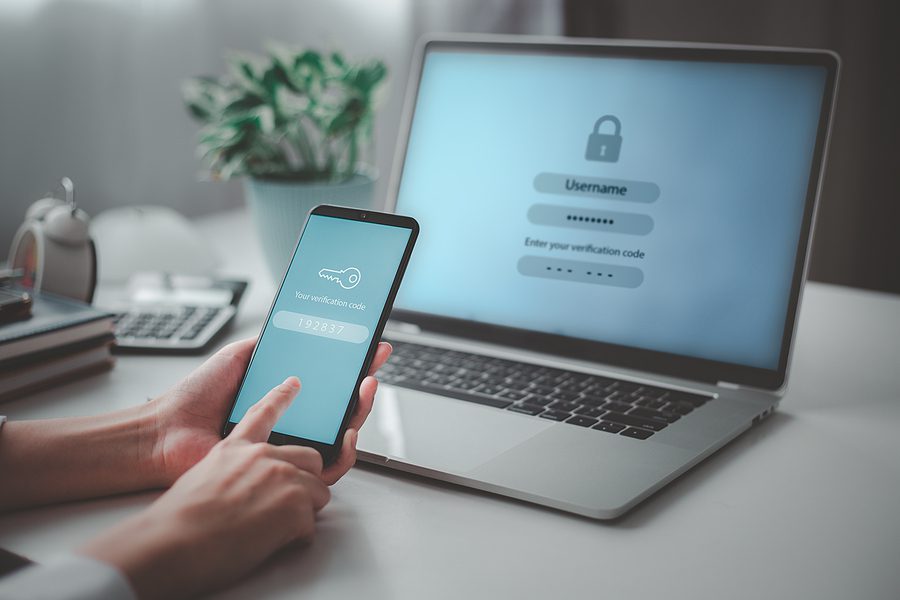Building Resilience Against Cyber Threats with MFA
Despite your best efforts at cybersecurity, a single password breach leaves your sensitive business data vulnerable. It’s a frustrating reality—just one weak link can compromise your sensitive data. Multi-Factor Authentication (MFA) offers a powerful solution by adding another layer of protection beyond strong passwords alone. With MFA, unauthorized users face greater barriers, making it far more challenging to access the company information you’ve worked hard to safeguard.
Understanding Multi-Factor Authentication
Multi-Factor Authentication involves the use of two or more verification methods to confirm an employee’s identity before granting access to sensitive systems or information. By requiring multiple forms of verification, you can greatly reduce the likelihood of unauthorized access and prevent a data breach.
The main components of MFA typically fall into three categories:
- Something you know: This could be a password or PIN.
- Something you have: This may include a smartphone app, hardware token, or SMS verification.
- Something you are: This involves biometric data, such as fingerprints or facial recognition.
Implementing MFA means that even if a password is compromised, unauthorized access is still hindered by the requirement for additional verification methods.
MFA in Business Cybersecurity
Every year cybersecurity incidents are on the rise, with organizations of all sizes experiencing breaches that can lead to severe financial and reputational damage. According to a report by IBM, the average cost of a data breach can exceed one million dollars, underscoring the financial ramifications of inadequate security measures.
Methods of Multi-Factor Authentication
You can choose from several MFA methods, each offering varying levels of security and user experience. Here are some of the most effective options:
- SMS Verification: A one-time code is sent via text message to the user’s registered mobile phone. While convenient, this method can be vulnerable to SIM swapping attacks.
- Authenticator Apps: Applications such as Google Authenticator or Authy generate time-sensitive codes that users enter along with their password. This method is generally more secure than SMS, as it does not rely on mobile networks.
- Biometric Recognition: Fingerprints, facial recognition, and iris scans provide a highly secure form of authentication, as they rely on unique biological traits that are difficult to replicate.
Each of these methods contributes to a more robust security framework, making it difficult for attackers to exploit simple weaknesses in password-only systems.
Best Practices for Implementing MFA
Employees play a huge role in upholding a company’s cybersecurity defenses, as even the most advanced security measures can be undermined if not followed consistently. When employees adhere to best practices—such as using strong passwords, avoiding phishing attempts, and implementing Multi-Factor Authentication (MFA)—they become a vital line of defense against potential threats.
Conduct Employee Training Consistently
Providing comprehensive training on Multi-Factor Authentication (MFA) is essential for successful implementation. Employee training should emphasize the importance of MFA in enhancing security and protecting sensitive information. During these sessions, employees can learn to recognize phishing attempts and other common cyber threats that may compromise their accounts. Including practical demonstrations of various MFA methods—such as SMS verification, authenticator apps, and biometric systems—ensures that employees feel confident and capable of using these tools effectively.
Implement User-Friendly Solutions
Choosing user-friendly MFA solutions is key to encouraging employee adoption. If the authentication process is overly complex or time-consuming, users may become frustrated and resistant, which can undermine security. Select MFA options that integrate smoothly with your existing systems and workflows to reduce friction. By prioritizing intuitive and accessible MFA methods, you’ll create a system that employees can easily navigate and are more likely to use.
Regularly Review and Update MFA Policies
Cybersecurity best practices constantly evolve as new threats and vulnerabilities emerge. To maintain robust security, it’s important to regularly review and update your MFA policies. This process involves assessing the effectiveness of current MFA methods and ensuring they address emerging threats adequately. Stay informed about advancements in MFA technology and consider implementing new, more effective solutions as they become available. Regular updates keep your company’s cybersecurity strong and responsive to online threats.
Monitor Access Logs
Regularly monitoring access logs allows you to identify potential security breaches before they escalate. By maintaining detailed records of login attempts—both successful and unsuccessful—you can detect unusual patterns or suspicious activities. Anomalies, like repeated failed logins or access from unfamiliar devices, may indicate attempts to compromise your security. Analyzing these logs enables a prompt response to potential threats, helping to safeguard sensitive information from unauthorized access.
Building a Stronger Security Posture
The increasing sophistication of cyber threats demands proactive measures to protect sensitive information. By implementing MFA, you can significantly reduce the risks associated with credential theft and unauthorized access.
MFA helps build resilience against cyber threats, enabling companies to safeguard their assets effectively. As cyberattacks become more common and more complex, prioritizing MFA can make a meaningful difference in protecting your information.
Take Action Against Cyber Threats
AccuShred has partnered with uRISQ to help you identify and assess the weak points in your data security. After a threat assessment, you can adjust and improve your security practices. In the case of a breach, uRISQ also offers a breach reporting service that can help you through your data breach recovery plan, too.
By adopting MFA and following best practices for implementation, you can significantly enhance your cybersecurity measures and protect sensitive information from unauthorized access. If you have questions about strengthening your organization’s cybersecurity, or you’re interested in learning more about our self-assessment tool, don’t hesitate to contact us today to learn how we can help you safeguard your valuable information and build resilience against cyber threats.








